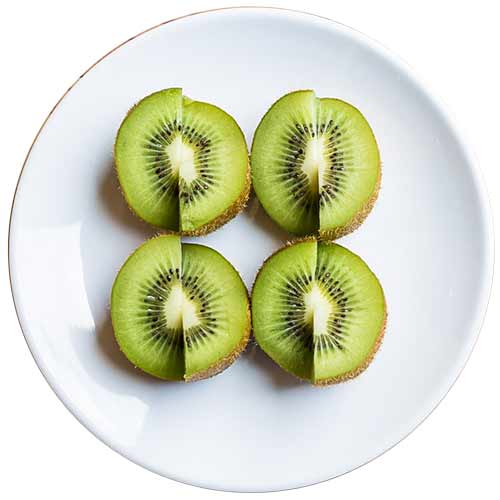Team:Toronto/Team
From 2014.igem.org
| Line 61: | Line 61: | ||
<div class="container"> | <div class="container"> | ||
<div class="blurb"> | <div class="blurb"> | ||
| - | <img src="https://s3-us-west-2.amazonaws.com/s.cdpn.io/4273/kiwifruit-on-a-plate.jpg" alt="A photograph of sliced kiwifruit on a while plate" class="curve left">Kiwifruit | + | <img src="https://s3-us-west-2.amazonaws.com/s.cdpn.io/4273/kiwifruit-on-a-plate.jpg" alt="A photograph of sliced kiwifruit on a while plate" class="curve left"> |
| + | <div class="name textleft"Kiwifruit</div> | ||
<p>This is kiwifruit: originally called “yang tao”, “melonette” or Chinese gooseberry. Cultivated in its fuzzy variety from Chinese imports, the fruit proved popular with American military servicemen stationed in New Zealand during World War II, with commercial export to the United States starting after the end of the war. In California, the fruit was rebranded as “kiwifruit” due to its resemblance to New Zealand’s national bird. However, it is not a “kiwi”, which is also the demonym for native New Zealanders. Saying “I’m going to eat a kiwi” implies that you are either a cannibal or planning to dine on an endangered flightless bird. | <p>This is kiwifruit: originally called “yang tao”, “melonette” or Chinese gooseberry. Cultivated in its fuzzy variety from Chinese imports, the fruit proved popular with American military servicemen stationed in New Zealand during World War II, with commercial export to the United States starting after the end of the war. In California, the fruit was rebranded as “kiwifruit” due to its resemblance to New Zealand’s national bird. However, it is not a “kiwi”, which is also the demonym for native New Zealanders. Saying “I’m going to eat a kiwi” implies that you are either a cannibal or planning to dine on an endangered flightless bird. | ||
| Line 67: | Line 68: | ||
<div class="blurb"> | <div class="blurb"> | ||
| - | <img src="https://s3-us-west-2.amazonaws.com/s.cdpn.io/4273/kiwifruit-on-a-plate.jpg" alt="A photograph of sliced kiwifruit on a while plate" class="curve right">Kiwifruit | + | <img src="https://s3-us-west-2.amazonaws.com/s.cdpn.io/4273/kiwifruit-on-a-plate.jpg" alt="A photograph of sliced kiwifruit on a while plate" class="curve right"> |
| + | <div class="name textright"Kiwifruit</div> | ||
<p>This is kiwifruit: originally called “yang tao”, “melonette” or Chinese gooseberry. Cultivated in its fuzzy variety from Chinese imports, the fruit proved popular with American military servicemen stationed in New Zealand during World War II, with commercial export to the United States starting after the end of the war. In California, the fruit was rebranded as “kiwifruit” due to its resemblance to New Zealand’s national bird. However, it is not a “kiwi”, which is also the demonym for native New Zealanders. Saying “I’m going to eat a kiwi” implies that you are either a cannibal or planning to dine on an endangered flightless bird. | <p>This is kiwifruit: originally called “yang tao”, “melonette” or Chinese gooseberry. Cultivated in its fuzzy variety from Chinese imports, the fruit proved popular with American military servicemen stationed in New Zealand during World War II, with commercial export to the United States starting after the end of the war. In California, the fruit was rebranded as “kiwifruit” due to its resemblance to New Zealand’s national bird. However, it is not a “kiwi”, which is also the demonym for native New Zealanders. Saying “I’m going to eat a kiwi” implies that you are either a cannibal or planning to dine on an endangered flightless bird. | ||
Revision as of 21:24, 17 October 2014

This is kiwifruit: originally called “yang tao”, “melonette” or Chinese gooseberry. Cultivated in its fuzzy variety from Chinese imports, the fruit proved popular with American military servicemen stationed in New Zealand during World War II, with commercial export to the United States starting after the end of the war. In California, the fruit was rebranded as “kiwifruit” due to its resemblance to New Zealand’s national bird. However, it is not a “kiwi”, which is also the demonym for native New Zealanders. Saying “I’m going to eat a kiwi” implies that you are either a cannibal or planning to dine on an endangered flightless bird.

This is kiwifruit: originally called “yang tao”, “melonette” or Chinese gooseberry. Cultivated in its fuzzy variety from Chinese imports, the fruit proved popular with American military servicemen stationed in New Zealand during World War II, with commercial export to the United States starting after the end of the war. In California, the fruit was rebranded as “kiwifruit” due to its resemblance to New Zealand’s national bird. However, it is not a “kiwi”, which is also the demonym for native New Zealanders. Saying “I’m going to eat a kiwi” implies that you are either a cannibal or planning to dine on an endangered flightless bird.
 "
"